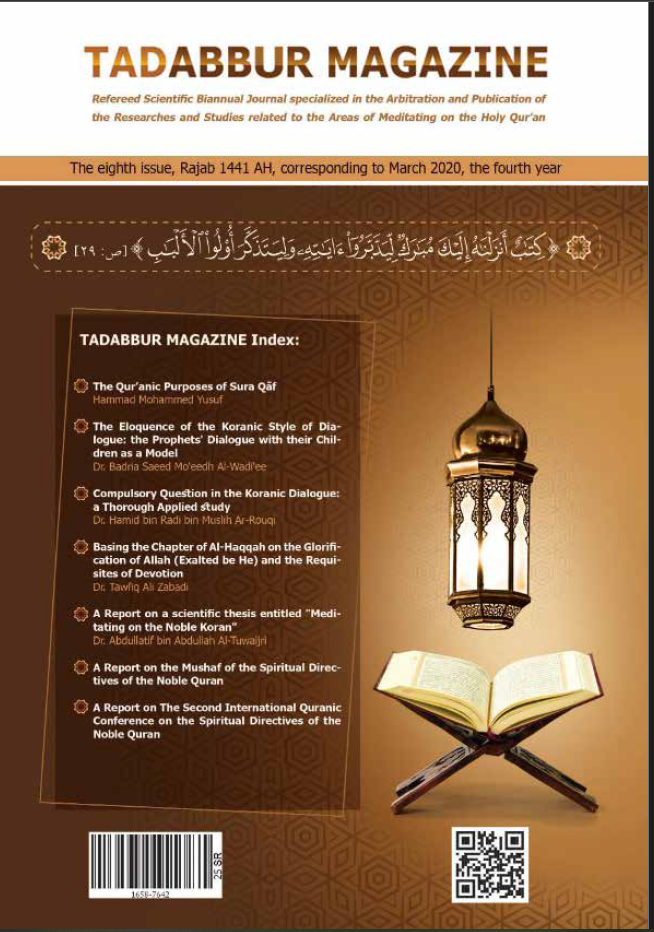report on a scientific thesis entitled"Meditating on the Noble Koran"
Main Article Content
Abstract
Research Abstract
Research Topic: This study explores the concept of Tadabbur (reflection) on the Quran, its significance in a Muslim’s life, and its impact on individuals and society. It highlights the necessity of understanding and applying Quranic teachings through structured contemplation.
Research Objectives:
- Clarify the concept of Tadabbur and its relation to similar terms.
- Define the religious and scientific principles governing Tadabbur.
- Identify the motivations and obstacles associated with Quranic reflection.
- Examine the effects of Tadabbur on individuals and society.
- Analyze previous studies to derive new scholarly conclusions.
Research Methodology:
- Inductive method for gathering Quranic and Hadith texts on Tadabbur.
- Analytical method for extracting scientific insights.
- Utilizing reliable sources from Quranic exegesis and related sciences.
- Authenticating Hadith citations from primary references.
Keywords: Tadabbur, Quran, Tafsir, Islamic principles, Quranic studies, Impact of reflection.
The study affirms that Tadabbur is essential for comprehending and practicing Islam. Adhering to its scholarly principles ensures societal well-being and reinforces the Quran’s role as a guiding light.
Downloads
Article Details
Conference Proceedings Volume
Section

This work is licensed under a Creative Commons Attribution-NonCommercial 4.0 International License.
Indicating to the intellectual property, copyrights, and open access right:
According to the Budapest Initiative 2002; tadabbur Journal, which is issued by Khibrat Taibah For Research and Studies in Medina, provides free open access to its publications, and applies the Creative Commons license:
Attribution- Non-Commercial 4.0 International (CC BY-NC 4.0) for the works it publishes from peer-reviewed scientific research and reports, which are freely available on the Internet, and which allows any user to read, download, copy, and distribute (Convert), print, search, or create links to the full texts of the journal’s research and publications, and analyze them in an automatic manner for discovering them, sending them as software data, or using them for any other legal purpose, without financial, legal, or other technical barriers beyond those related to Internet access.
It also highlight that the only barrier to reproduction and distribution, and the only role of copyright in this field, is the necessity of granting the authors of the journal’s research and reports and the publisher the journal; Control over their works, and the right to official recognition and reference citations.





